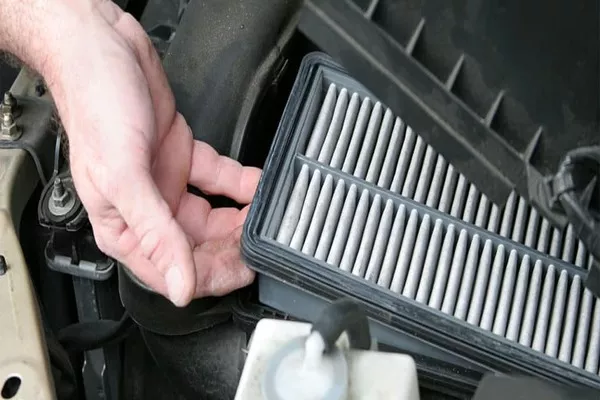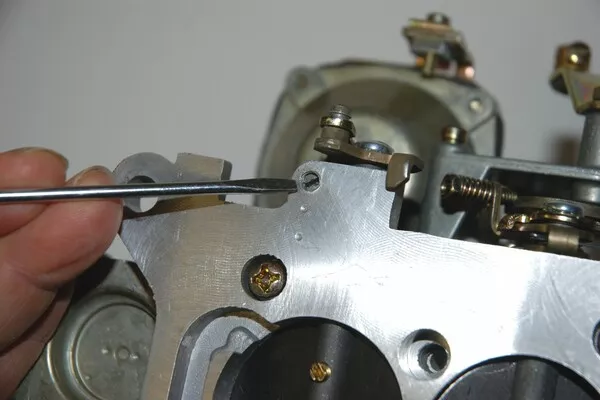A vehicle’s carburetor plays a vital role in mixing air and fuel that the engine uses to make your car run. It is important to adjust it so the correct amount of both elements can be present. Doing so can sound like an intimidating task but, actually, adjusting your carburetor is easy. Check out this guide from Philkotse.com.
Step #1. Locate your car’s air filter then remove it
Does your car require you to remove the air filter first so the carburetor can be exposed? This may be the first step for you. If it is, make sure that the car’s engine is turned off. If your car is fresh from a trip, do not immediately lift the hood or even touch to avoid burning your skin. Wait for a few minutes before proceeding.
Check the hood temperature with your hand. It feels cool, it usually means that the rest of your engine parts are ready for handling. You can now safely pop the hood to locate the parts that you will need to adjust the carburetor.
How To Adjust A Carburetor On Your Car
First, look for the wing-nut. It should be tightly covering the air filter, so removing the wing nut would give you access to it. Then, use a corresponding screw to remove it as well as any other connectors attached to it. You can then freely remove the air filter.
Note that the location of your air filter can vary depending on the make and model of your car. On most cars, the part that houses the air cleaner is located near the carburetor. There are some manufacturers that attach the air filter to the carburetor so it’s easier to find.
The type of engine used on your vehicle also greatly contributes to this. For example, a V6 engine would have its air filter installed in a different area from where it would be kept in a V8 engine. Check your air filter’s location by looking at your car’s manual for the engine diagram or by asking a mechanic to help you find it.

Most cars would require you to first remove its air filter to expose its carburetors
>>> Read more: 8 telltale signs that you need to replace your air filter.
Step #2. Look for the adjustment screws
Now that your carburetor is in plain sight, you should be able to see a couple of adjustment screws. They should be right on the front of the carburetor unit. These screws play a significant role in adjusting the fuel and air mixture that enters and leaves the carburetor.
These usually look like plain screws but with flat heads. You can use a screwdriver to turn the screws to adjust the amount of air and fuel that’s currently being mixed in the carburetor unit.

Your car’s adjustment screws should be right on the front of the carburetor unit
There are some carburetors like the Quadrajet found in a lot of GM vehicles that are built with a special screw. These require a specific adjusting tool, so that means you may have to buy one if your engine carburetor belongs to this type.
If your carburetor unit is a Quadrajet, then you will need a Double “D” carburetor adjusting tool to modify the air-fuel intake.
You can purchase this tool at auto supply stores, as well as online shops that carry auto supplies. Other carburetor units may also have the four-corner idle mix adjustment or also known as four idle mixture screws.

If your carburetor unit is a Quadrajet, you will need a Double “D” carburetor adjusting tool
Step #3. Start the engine to warm it up
Locate your vehicle’s temperature gauge. Once you find it, you should be able to see the appropriate running temperature. If you know your car really well, you can also listen to the sound of your engine to know if it has reached its appropriate running temperature.
- If your car engine runs lean, it will ping at a higher RPM once the throttle is open. This would be as if you were flooding the gear. Your engine will naturally need more gas added to the mixture.
- If your car engine runs rich, any changes in the sound will be hardly noticeable. You will be able to smell it though. Bring the throttle lower to minimize fuel requirement. If your engine runs too rich while idle, it will cause the plugs to be fuel-fouled. This will ultimately make your vehicle harder to start cold.

If your car engine runs lean, it will ping at a higher RPM once the throttle is open
Step #4. Start adjusting the two screws
By now you would need to adjust the two screws at an equal and steady pace. This part of the procedure is like fine-tuning a guitar on any other string instrument. It requires that you turn the two screws equally at a slow but sure pace.
Your goal by doing this is to find the right mixture of air and fuel to enter and leave the carburetor, or as mechanics call it: the “sweet spot.” Whether your car has been running too lean or too rich, you would need to adjust the screws to a very lean blend by turning them both by a quarter at the same time.
Do this in a counter-clockwise direction then slowly turning it back up to its original position to acquire a smooth mixture of the elements.
This part may be confusing to some but expert mechanics know that adjusting the fuel and air mixture is an art. It requires that you know your car’s engine and that you’re familiar with the sounds it makes. Slowly turn the two screws and listen if your engine gives a smooth but audible purring noise.
If there’s raggedness, rattling or any sound that doesn’t seem to please you, then your mixture adjustment must be too lean. Keep turning but listen closely to the sound that your engine makes until you find its “sweet spot”

You would need to adjust the two screws at an equal and steady pace
>>> Worth to check: 10 bad car noises Filipino drivers should look out for.
Step #5. Replace your car engine’s air assembly
After finally locating your carburetor’s sweet spot, you should put the air filter you removed earlier. If you also need to adjust your idle speed, you can wait until the air filter is placed back on.
After that, you can go ahead and tweak the idle speed according to your liking. Congratulations, you’ve successfully adjusted your carburetor! You’re ready to roll!
Recent posts
- 4 common reasons why car engines lose horsepower over time Jun 25, 2019
- 6 common kinds of car air filter & how to choose the best one Feb 23, 2021
- Replacing car air filter: Must-have skills that every Filipino driver needs to know Feb 23, 2021
- How To Know If Your Car Engine Needs An Overhaul Aug 04, 2020
- Spotting 8 Early Symptoms of Engine Problems Jul 05, 2018












